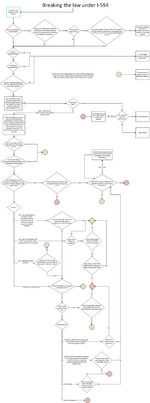- Messages
- 907
- Reactions
- 185
Look at page 8 (1) of the bill.
http://sos.wa.gov/_assets/elections/initiatives/FinalText_483.pdf
It says,
All firearm sales or transfers, in whole or part in this state including without limitation a sale or transfer where either the purchaser or seller or transferee or transferor is in Washington, shall be subject to background checks unless specifically exempted by state or federal law.
Now look at 27 C.F.R. 478.102(d)
Under federal law, persons who have been issued state permits to purchase or possess firearms are exempt from background checks if those permits were issued:
1) Within the previous five years in the state in which the transfer is to take place; and
2) After an authorized government official has conducted a background investigation, including a search of the NICS database, to verify that possession of a firearm would not be unlawful.
Who is NICS Exempt look at the ATF Web Site. https://www.atf.gov/content/firearms/firearms-industry/permanent-brady-permit-chart
Washington: Concealed pistol license issued on or after July 22, 2011 qualify.
Not sure who will be the first to test it as a defense! But the law says!
"unless specifically exempted by state or federal law."
http://sos.wa.gov/_assets/elections/initiatives/FinalText_483.pdf
It says,
All firearm sales or transfers, in whole or part in this state including without limitation a sale or transfer where either the purchaser or seller or transferee or transferor is in Washington, shall be subject to background checks unless specifically exempted by state or federal law.
Now look at 27 C.F.R. 478.102(d)
Under federal law, persons who have been issued state permits to purchase or possess firearms are exempt from background checks if those permits were issued:
1) Within the previous five years in the state in which the transfer is to take place; and
2) After an authorized government official has conducted a background investigation, including a search of the NICS database, to verify that possession of a firearm would not be unlawful.
Who is NICS Exempt look at the ATF Web Site. https://www.atf.gov/content/firearms/firearms-industry/permanent-brady-permit-chart
Washington: Concealed pistol license issued on or after July 22, 2011 qualify.
Not sure who will be the first to test it as a defense! But the law says!
"unless specifically exempted by state or federal law."












